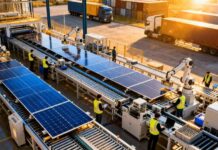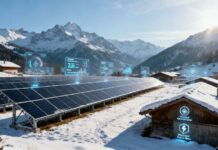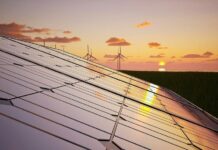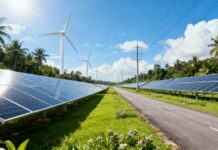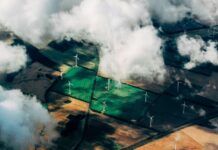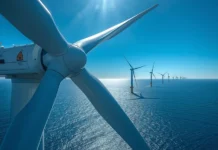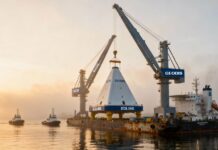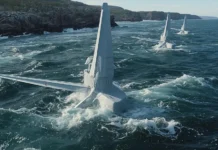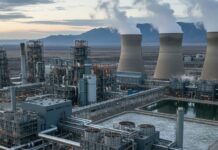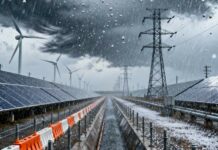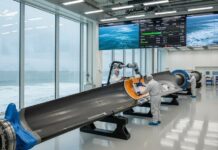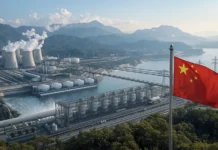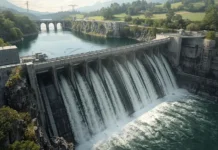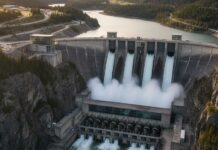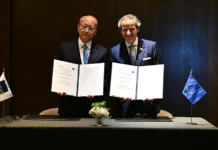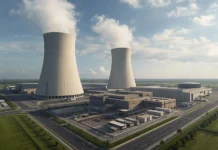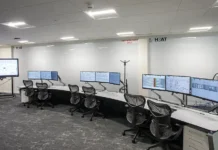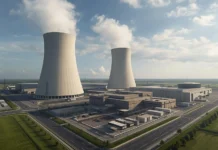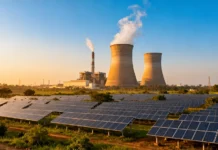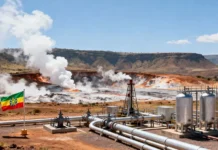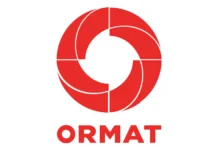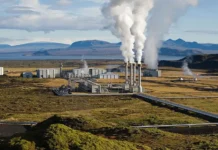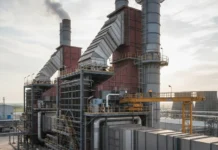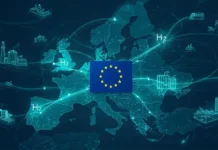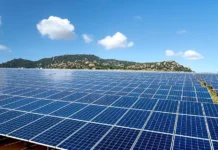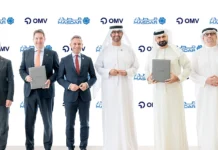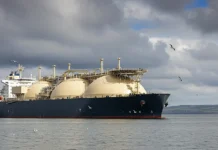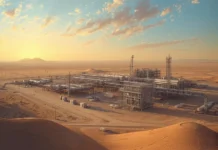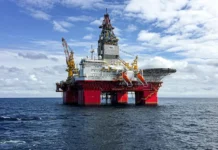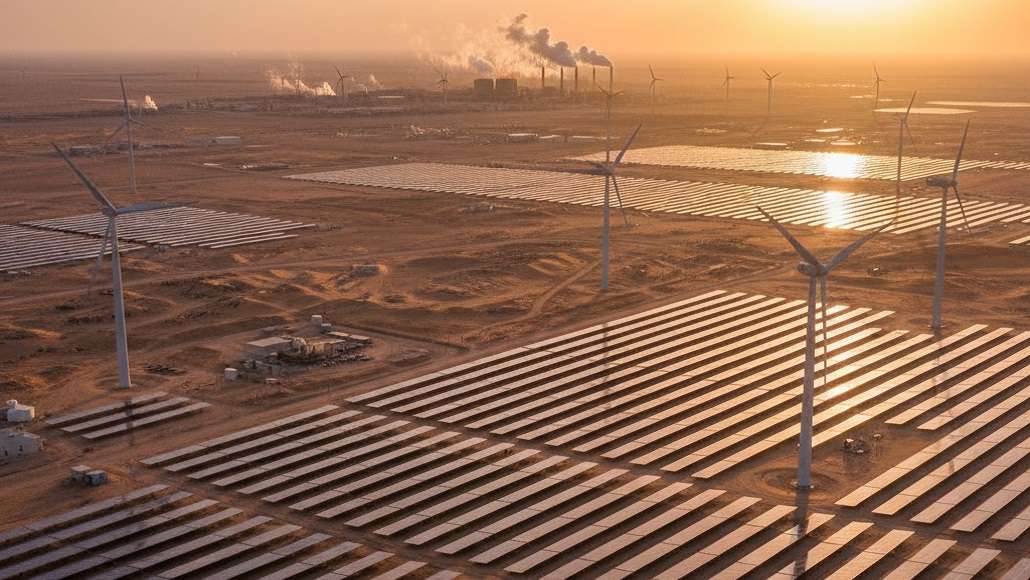Middle East Energy Transition 2030: Integrating Renewables into the Industrial Mix
The Middle East stands at a transformative crossroads, reimagining its role in the global energy landscape. Long recognized as the world’s hydrocarbon heartland, the region is now accelerating toward a renewable-powered future that promises to reshape industrial energy systems by 2030. This Middle East energy transition represents not merely an adaptation to global climate imperatives but a strategic recalibration of economic foundations, technological capabilities, and regional competitiveness.
The Scale of Transformation
The Middle East and North Africa region is positioning itself as a global renewable energy powerhouse, with solar capacity projected to reach 75 gigawatts by 2030. This remarkable expansion builds upon current installed solar capacity of 22.3 gigawatts, following the addition of 2.6 gigawatts in 2024 alone. The trajectory extends far beyond these figures, with the region’s combined renewable energy ambitions totaling 236 gigawatts of new capacity by decade’s end, including 115 gigawatts of solar installations.
Saudi Arabia anchors this transformation, accounting for nearly half of the region’s renewable energy targets with plans to deploy between 100 and 130 gigawatts of renewables by 2030. The Kingdom’s Vision 2030 initiative aims to generate 50 percent of electricity from renewable sources, supported by flagship projects including the 2.6 gigawatt Al Shuaibah solar development and the ambitious NEOM smart city concept. Meanwhile, the United Arab Emirates leads in operational capacity, having expanded solar installations from merely 12 megawatts in 2012 to 6.1 gigawatts in 2023.
Industrial Integration Strategies
The integration of renewables into industrial energy systems represents the most complex dimension of the Middle East energy transition. Heavy industries including cement, steel, aluminum, and petrochemicals face unique challenges in transitioning away from fossil fuels while maintaining production efficiency and global competitiveness.
The UAE’s Industrial Decarbonization Roadmap exemplifies comprehensive planning for this integration. Unveiled at COP28, the roadmap targets cumulative carbon dioxide emissions reductions of 2.9 gigatonnes by 2050 across heavy manufacturing sectors. The phased approach establishes clear milestones: a 5 percent emissions reduction by 2030, escalating to 63 percent by 2040, and reaching 93 percent by 2050. Implementation relies on over 50 evaluated decarbonization technologies, including clean electricity transition, carbon capture utilization and storage, manufacturing efficiency improvements, alternative fuels adoption, enhanced recycling processes, and hydrogen integration.
This industrial transformation is projected to eliminate 90 million tons of carbon dioxide annually once fully implemented. The renewable integration extends beyond electricity generation to encompass process heat applications, where solar thermal systems and green hydrogen derived from renewable electricity can replace natural gas in high-temperature industrial processes.
Renewable Energy Mix and Technology Deployment
Solar photovoltaic technology dominates the regional renewable energy mix, leveraging the Middle East’s exceptional solar irradiance that ranks among the highest globally. Large-scale gigawatt projects have become the new standard, with economies of scale driving levelized costs of energy to unprecedented lows. Saudi Arabia’s Shuaiba 1 Solar Power project achieved a record-low levelized cost of 3.9 Saudi Halala per kilowatt-hour, demonstrating the economic viability of utility-scale solar in the region.
Wind energy is gaining traction as a complementary resource, particularly in Saudi Arabia’s northwestern corridors and along coastal areas. The Kingdom’s 400-megawatt Dumat al-Jandal wind project represents the region’s growing confidence in wind technology. The temporal complementarity between solar and wind resources enables more consistent renewable energy generation patterns, reducing the intermittency challenges that complicate grid integration.
Energy storage systems are emerging as critical enablers of high renewable penetration. Abu Dhabi’s groundbreaking solar-plus-storage project combines 5.2 gigawatts of photovoltaic capacity with a 1,000-megawatt, 19-gigawatt-hour battery energy storage system, creating the first facility capable of dispatching round-the-clock baseload power from renewable sources. This configuration transforms solar from an intermittent resource into a reliable foundation for industrial operations.
Grid Modernization and Infrastructure Investment
Successfully integrating renewables into industrial energy systems demands comprehensive grid modernization. The Middle Green Initiative, a regional framework led by Saudi Arabia, coordinates emission reduction efforts across participating nations, targeting a 60 percent reduction in regional emissions. Grid modernization investments focus on transmission capacity expansion to connect remote renewable generation sites with industrial load centers, advanced forecasting systems that predict renewable generation and industrial demand patterns, frequency regulation mechanisms to maintain grid stability with variable generation, and voltage management technologies ensuring power quality for sensitive industrial processes.
Smart grid technologies incorporating artificial intelligence and machine learning optimize energy flows in real-time, balancing renewable generation fluctuations with industrial consumption patterns. These digital infrastructure layers enable demand response programs where industrial facilities adjust operations to align with renewable energy availability, maximizing clean energy utilization while maintaining production schedules.
Economic Drivers and Investment Landscape
The economics underpinning the Middle East energy transition have fundamentally shifted. Record declines in renewable technology costs, particularly for solar photovoltaic systems where utility-scale generation expenses decreased 68 percent between 2015 and 2023, have rendered clean energy competitive with fossil fuel alternatives even before considering environmental benefits or subsidy removal.
Investment capital is flowing at unprecedented scales. Saudi Arabia’s first wave of Green Initiative projects represents 185 billion dollars in committed funding. The Kingdom has established a dedicated 2.5 billion dollar fund to support Middle East Green Initiative projects across the region. Private sector participation is accelerating through competitive auction mechanisms that ensure transparent pricing and attract international developers with proven track records.
The renewable integration business case extends beyond direct energy cost savings. Industrial facilities reducing carbon footprints gain preferential access to European and North American markets implementing carbon border adjustment mechanisms. Enhanced energy independence insulates operations from fossil fuel price volatility. Sustainability credentials attract environmentally conscious investors and customers willing to pay premiums for low-carbon products.
Challenges and Implementation Barriers
Despite remarkable progress, the Middle East energy transition confronts significant obstacles. The 40-gigawatt gap between planned solar projects and stated 2030 targets requires accelerated project planning and execution. Wind energy faces an even larger 23-gigawatt development gap.
Workforce development remains critical, as the renewable energy sector demands skillsets distinct from traditional hydrocarbon industries. Technical expertise in power electronics, battery systems, SCADA integration, and renewable energy forecasting must be cultivated through targeted education programs and international knowledge transfer.
Regulatory frameworks continue evolving to address renewable integration complexities. Interconnection standards, grid codes accommodating distributed generation, renewable energy credit mechanisms, and industrial energy efficiency mandates require ongoing refinement.
Water scarcity presents a particular challenge for certain renewable technologies and industrial processes. While photovoltaic solar installations require minimal water, concentrated solar thermal systems and hydrogen production through electrolysis demand substantial water resources in an already water-stressed region.
The Path to 2030 and Beyond
The Middle East energy transition represents a fundamental reimagining of regional industrial systems. By 2030, renewable energy will transition from supplementary to foundational, powering manufacturing facilities, desalination plants, and transportation networks with clean electricity. The industrial energy mix will increasingly feature green hydrogen produced from renewable electricity, replacing natural gas in high-temperature processes and serving as both energy carrier and chemical feedstock.
Success depends on sustained political commitment, continued technological cost reductions, adequate infrastructure investment, skilled workforce development, and regional cooperation frameworks. The economic and environmental stakes could not be higher. With proper execution, the Middle East energy transition will deliver not only emissions reductions and energy security but also economic diversification, technological leadership, and sustainable prosperity for the region’s 400 million inhabitants.
The transformation is already underway, driven by visionary leadership, favorable economics, and technological maturity. The question is no longer whether the Middle East will transition to renewable energy, but how rapidly and comprehensively this historic shift will unfold. The answer will shape both regional development and global climate outcomes for generations to come.



